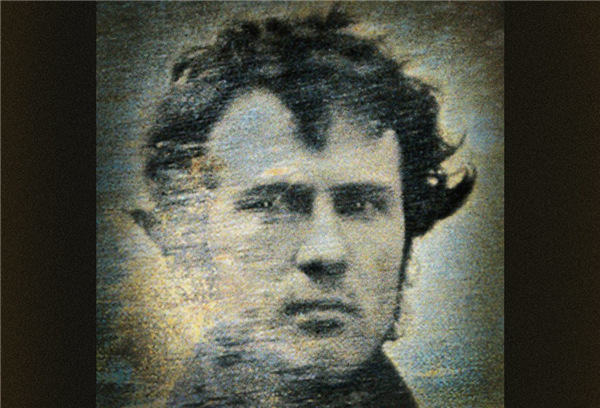 |
Robert Cornelius, a US citizen who captured his own portrait in the daguerreotype in 1839. [Photo provided to China Daily] |
Have you ever heard of Robert Cornelius? I thought not, but many of you owe him an enormous debt of gratitude.
In the 1830s, Cornelius, then a young man, worked in his father's silversmith shop in Philadelphia. He specialized in silver plating and metal polishing, through which he acquired a reasonable knowledge of metallurgy and chemistry.
These were the early days of the photo image, and he made the acquaintance of a photographer, a short time after the daguerreotype was invented, who asked him to prepare some of the metal plates used instead of film. Cornelius became fascinated with the new art form, turned his special knowledge to perfecting the plates used in the daguerreotype, and ultimately became a photographer himself.
Here's where it gets interesting. In 1839, he set up one of those early daguerreotype cameras outside the family shop, sat still in front of it for 10 to 15 minutes-because that's how long it took to take photograph in those early days-and captured his own image.
It was something that had never been done before-not the first human photographic portrait, something done months earlier in France, but the first, or at least the first known, self-portrait.
On that day in 1839, Cornelius invented the selfie.
Now, I've been unable to find much more information about Cornelius, so I'll have to speculate here.
I imagine that when that first selfie image had been processed on the thin, silver-plated piece of sheet copper and framed, as was the process with daguerreotypes, Cornelius took it home and put it in a place of honor, say, the fireplace mantelpiece. There, he and his family could admire what surely had to be the most accurate representation of a human face they had ever seen.
But over the years, as the novelty wore off, and as wrinkles framed with gray hair transformed the owner of that youthful image into an old man, that wonder gradually gave way to wistfulness when he cast his eye on the photo.
Ultimately, 54 years after taking the photo, Cornelius died. On his headstone in a Philadelphia cemetery overlooking the Schuylkill River stands a representation of the then 30-year-old Cornelius in the daguerreotype.
Who today has never taken a selfie?-well, me actually, though I do have a photo that passes for one, taken by a photographer friend. I use it as my WeChat profile photo.
With the invention of the mobile phone and its transformation into a portable, personal info center complete with camera at the ready, the selfie has become ubiquitous, a boundless phenomenon of self-expression. One that in the past 10 years or so seems to have sprung from nothing into a phenomenon embossed in the collective consciousness.
Even the word itself isn't that old. Its "first-known appearance ... in written form occurred in 2002 on an Australian news website, but the word didn't see much use until 2012", according to Merriam-Webster Dictionary.
Merriam-Webster further relates that by 2013, Oxford Dictionaries chose it as its Word of the Year. And that its use became pervasive in part because it was widely talked about by news organizations in December of that year after then-US president Barack Obama, at the memorial service for former South African president Nelson Mandela, was seen taking a selfie with the Danish and British prime ministers.
I have to wonder, though, whether many of the selfies taken nowadays will have that expressive connection bridging the centuries that Cornelius' does.